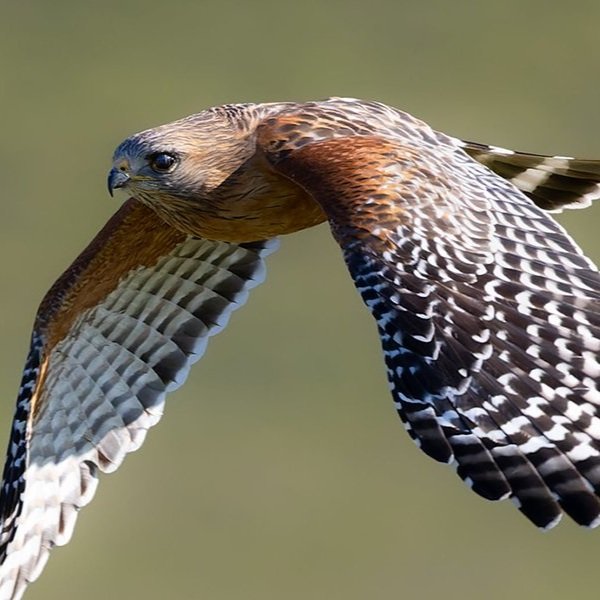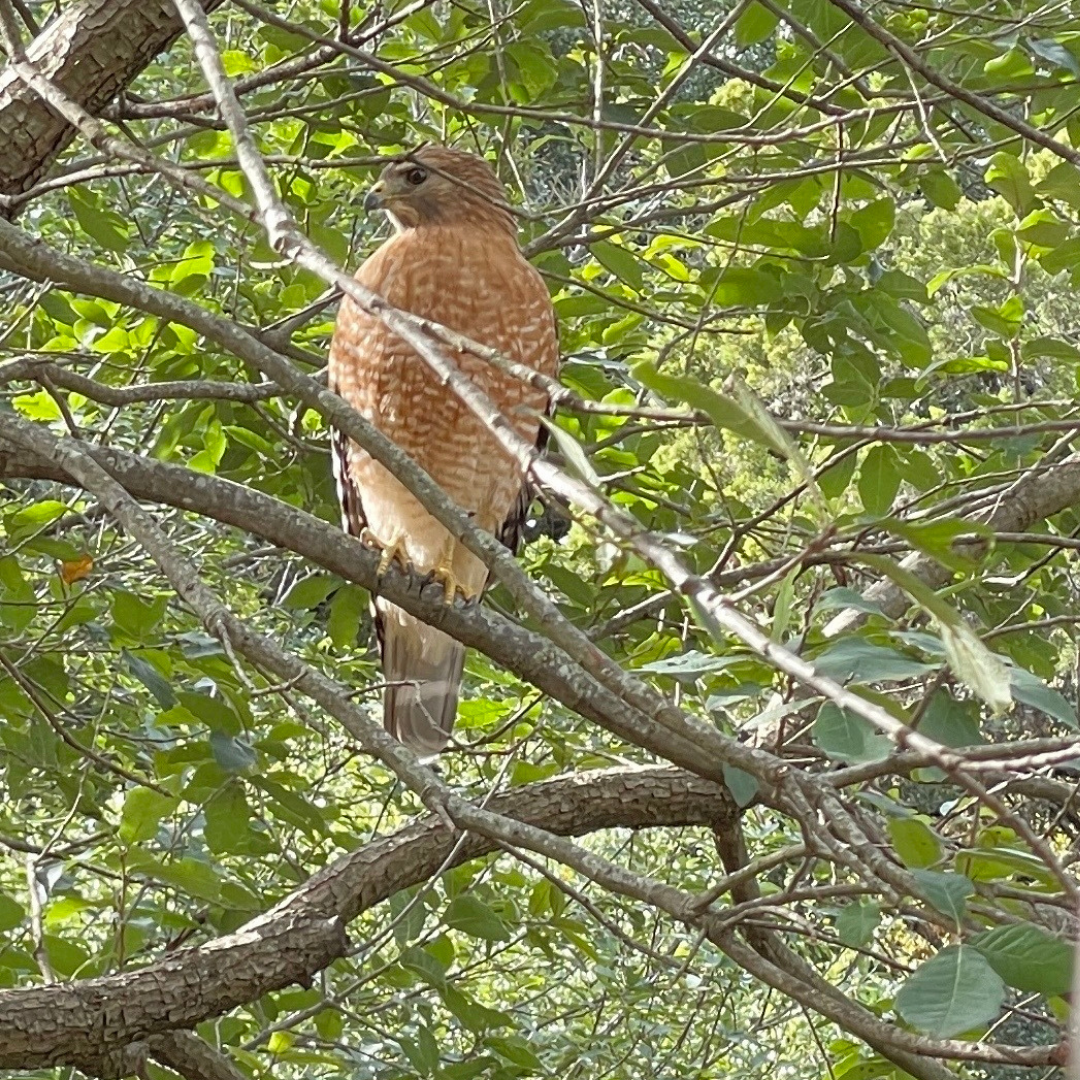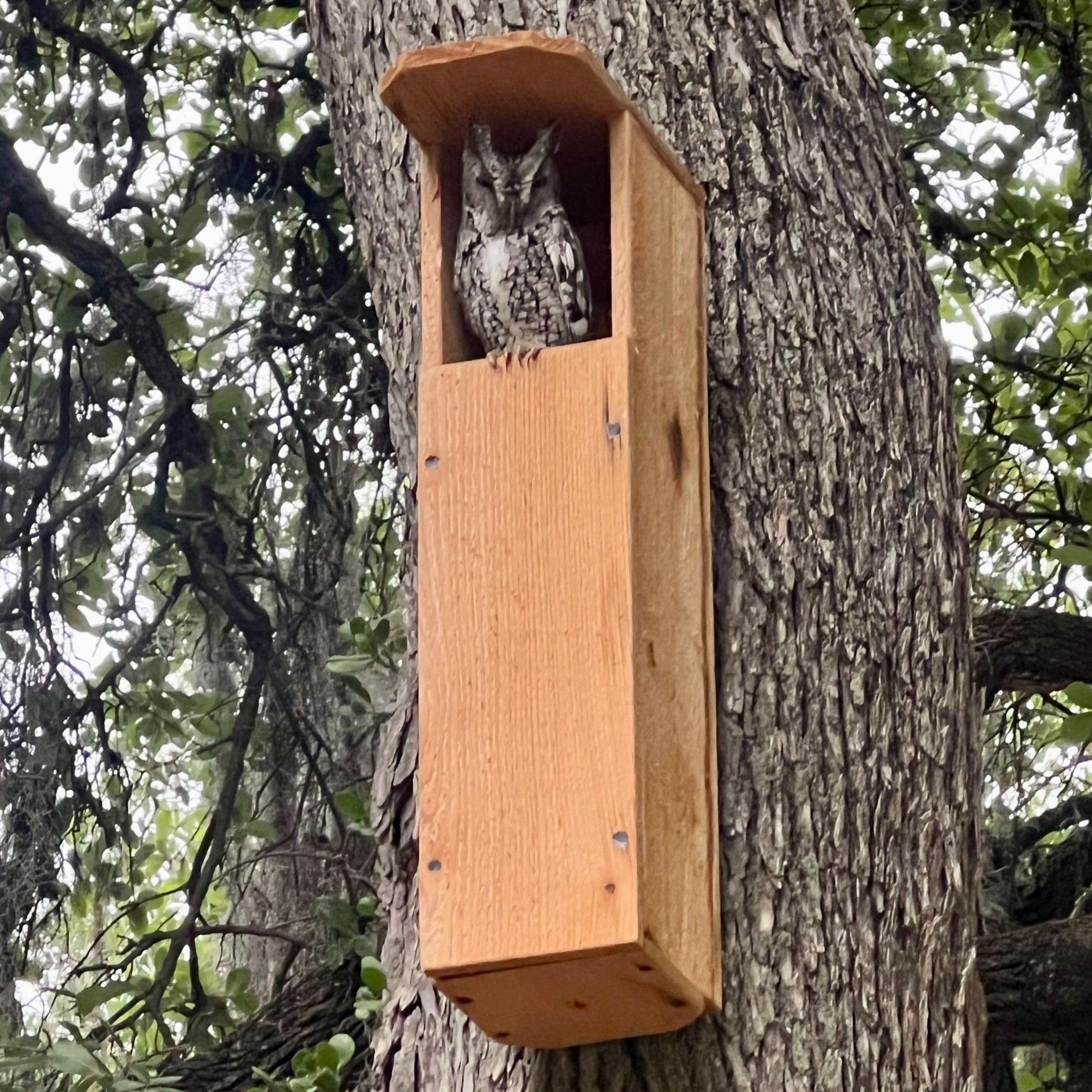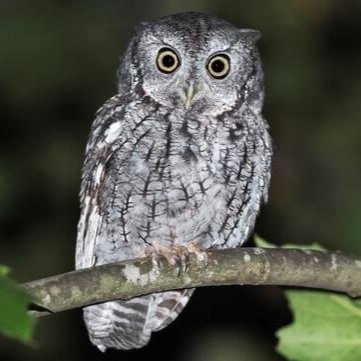BIRDS
Great Blue Heron
Great Blue Herons can be found nearby ponds, river banks, and edges of marshes. It is characterized with a greyish blue body and a white face, a long and pointy orangeish bill, and a black crown atop of the head that extends backwards. Great Blue Herons typically live around 15 years and they can range in size from 3.2 feet to 4.5 feet in height with a wingspan from 5.5 feet to 6.6 feet.
They typically feed on fish; however, they also prey on any insects, frogs, lizards, and small mammals like mice.
Northern Mockingbird
The Northern Mockingbird was adopted as the Texas state bird in 1927. It is also the only mockingbird commonly found in North America. This bird is mainly a permanent resident, but northern birds may move south during harsh weather. These thin long-tailed songbirds often sing 10-15 different songs in succession and can be heard in a variety of open habitats, including backyards.
Northern Mockingbirds are not shy and often sing from an open high perch or can be seen running or hopping across the ground chasing insects. They also will aggressively defend their territory from other birds, people, and even squirrels.
Northing Mockingbirds are medium-sized songbirds and are a bit more slender and has a longer tail than a thrush. They have small heads, a long, thin bill with a hint of a downward curve, and long legs. Their wings are short, rounded, and broad, making the tail seem particularly long in flight.
Mockingbirds are overall gray-brown, paler on the breast and belly, with two white wing bars on each wing. A white patch in each wing is often visible on perched birds, and in flight these become large white flashes. The white outer tail feathers area also flashy in flight.
Carolina Chickadee
Adults have a black cap and bib with white sides to the face. Their underparts are white with rusty brown on the flanks. Their back is grey and they have a short, dark bill, short wings, and a moderately long tail.
Carolina Chickadees may be found in deciduous and mixed deciduous-coniferous woodlands, swamps, riparian areas, open woods and parks, and also in suburban and urban areas.
They feed mostly on insects and spiders. They eat more plants in the winter. Carolina Chickadees glean insects from foliage and tree bark, often hanging upside down to do so.
In winter, Carolina Chickadees live in flocks of two to eight birds and defend areas against other flocks. Dominant birds in these flocks establish breeding territories in the summer that were part of the winter flock’s range.
Red-shouldered hawk
This medium-sized hawk lives in areas spanning eastern North America, along the coast of California, and northern to north-eastern-central Mexico. Most are permanent residents where they live except the most northern birds do migrate south to central Mexico.
Females are larger than their male counterparts (19-24 inches in length and 15-23 inches respectively). Adults have brownish heads, reddish chests, and pale bellies with reddish bars. Their tails are marked with narrow white bars. The red shoulders are visible when they are perched. They prey on small mammals, especially rodents.
Eastern Screech Owl
The Easter Screech Owl (Megascops asio) is a small owl found in the Southern, Midwestern, and Northeastern United States. These birds feed on large insects, small birds, lizards, mice, crayfish and sometimes even bats. They are identifiable by their rounded wings, big yellow eyes, raised ear tufts, and short and square tails. The grayish-brown coloring and the intricate bands throughout the bodies of Eastern Screech Owls make them excellent agents of camouflage.
Contrary to their name sake they do not screech all that often, making such sounds to defend their young from predators. Most of the time they produce soft trills and whines.
Oftentimes Eastern Screech Owls make their nests in natural hollows and holes in trees, however in many areas natural homes are unavailable for nesting. With that being said, artificial nesting boxes can be installed to add habitat. At Pease Park we have the honor to have had 30 nesting boxes installed by local community member, Marshall May. These wooden boxes are well ventilated and will last over 30+ years to provide homes to these wonderful creatures.








